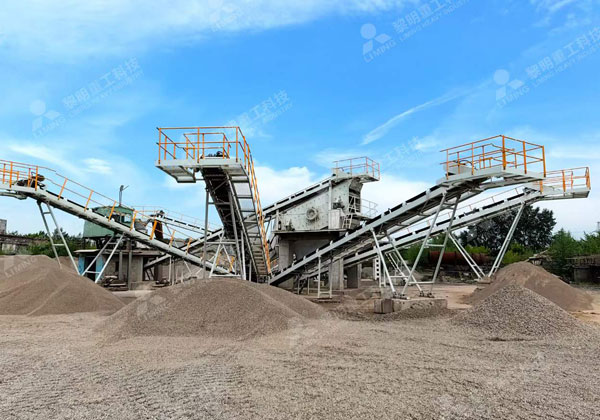A belt conveyor is a key component in aggregate production systems, providing a versatile and efficient means of transporting materials. In an aggregate production system, various types of raw materials such as sand, gravel, and crushed stone need to be transported from one point to another. Belt conveyors facilitate this process, ensuring a smooth and continuous flow of materials through the production line.

Components and Design
A typical belt conveyor system comprises several key components:
- Belt: The conveyor belt is the most critical part of the system. It is a continuous loop made from materials such as rubber, PVC, or metal, selected based on the nature of the material being transported and the environment in which the conveyor will operate.
- Pulleys: Pulleys are positioned at either end of the conveyor and are responsible for driving the belt and maintaining tension. The drive pulley is connected to a motor, while the tail pulley provides tension.
- Motor and Drive System: The motor powers the drive pulley, enabling the movement of the belt. The drive system can include gearboxes and other mechanical components to adjust speed and torque.
- Idlers: These are rollers placed along the length of the conveyor to support the belt and reduce friction. They can be troughing idlers, which help shape the belt into a U-shape for carrying bulk materials, or return idlers that support the empty belt on its return trip.
- Frame: The structure that supports the belt, pulleys, and other components. It can be made from steel or aluminum and is designed to withstand the load and environmental conditions.
- Loading and Unloading Points: These are specific areas where materials are loaded onto and discharged from the conveyor. Chutes and hoppers are often used to guide materials onto the belt.
Benefits in Aggregate Production
- Efficiency: Belt conveyors enable continuous operation, reducing downtime and increasing the overall efficiency of the aggregate production process. They can handle large volumes of material, making them ideal for high-capacity operations.
- Versatility: They can be used in a variety of applications, from transporting raw materials to moving finished products. They can also be customized to suit specific needs, including varying lengths, widths, and inclines.
- Cost-Effectiveness: Compared to other material handling systems like trucks or rail, belt conveyors offer lower operating costs. They require less labor and can be automated for even greater efficiency.
- Reduced Environmental Impact: Conveyors produce less dust and noise compared to truck transport, contributing to a safer and more environmentally friendly work environment.
Applications in Aggregate Production
- Primary Crushing and Screening: Belt conveyors are used to transport raw materials from the quarry to the primary crusher, and from the crusher to the screening equipment.
- Secondary and Tertiary Crushing: After primary crushing, conveyors transport the material to secondary and tertiary crushers for further reduction.
- Stockpiling: Conveyors can be used to create stockpiles of finished aggregate products, ensuring efficient storage and retrieval.
Maintenance and Considerations
Regular maintenance is crucial to ensure the longevity and performance of belt conveyor systems. This includes routine inspections, lubrication of moving parts, tension adjustments, and replacing worn-out components. Environmental factors such as weather conditions and material abrasiveness should also be considered when designing and operating a conveyor system.

